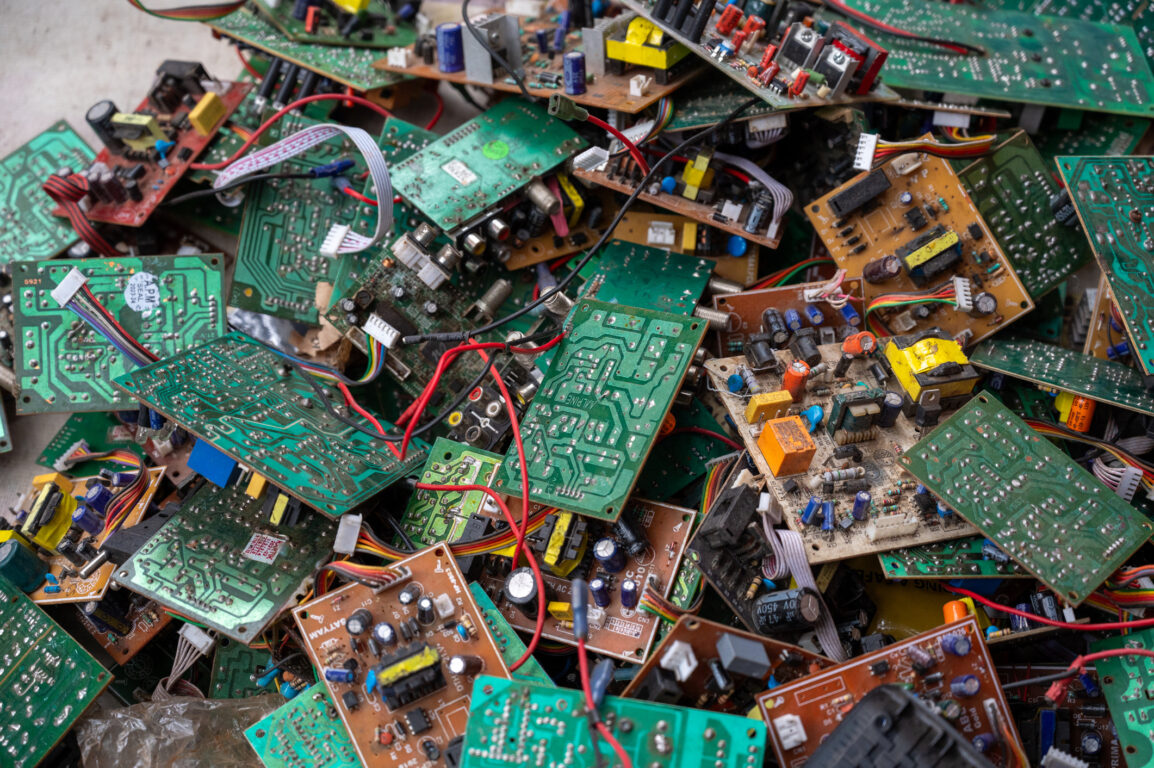Sustainable e-waste management: A growing challenge for Africa

The East African Communications Organisation (EACO) recently hosted the Regional Conference on Sustainable E-Waste Management in Nairobi, painting a grim picture of the current situation. Electronic waste (e-waste) refers to discarded products that are powered by electricity or batteries. As you read this article on your computer, smartphone, or tablet, you’re using devices that will eventually reach the end of their useful life and become part of this growing waste stream.
According to the United Nations Environment Programme (UNEP), e-waste is one of the fastest-growing waste categories globally, with alarming statistics highlighting the urgency of addressing this issue. The Global E-Waste Monitor 2024 report highlights that e-waste production reached a record 62 million tonnes in 2022, representing an 82% increase since 2010. Even more concerning, this figure is projected to rise by 32%, reaching 82 billion kilogrammes by 2030. This rapid growth presents significant environmental and economic challenges, especially in Africa.
Africa’s challenge
Africa is in a particularly precarious position. Although it generates less e-waste per capita compared to other continents, over 60% of the e-waste in Africa comes from imports. With the push for aspects of digitisation, such as mobile penetration and the sale of electronic goods, e-waste will continue to increase unless the various stakeholders take appropriate measures. Currently, only 1% of e-waste in Africa is formally collected and recycled.

One of the unique challenges Africa faces is its booming market for second-hand electronics. Many imported electronic devices are already near the end of their useful life. Developed countries often export second-hand or refurbished electronics to African nations. The market is growing as these devices promise a cost-effective entry into modern technology. Consumers are now seeking affordable alternatives to electronic devices.
While these devices help bridge the digital divide, they also present a growing environmental burden. Since these electronics quickly become waste, African nations bear the environmental, health, and disposal costs without fully benefiting from the original manufacturing value.
This economic imbalance underscores how Africa primarily functions as a consumer rather than a producer in the global electronics supply chain, leaving it vulnerable to becoming an e-waste dumping ground.
Recognising this threat, Kenya’s National Environment Management Authority (NEMA) banned the importation of second-hand electronic gadgets in 2020 to prevent the country from being used as a dumping site. However, this move faced opposition from the UN, which argued that such policies could hinder affordability and slow efforts to bridge the digital divide. A report by the United Nations Conference on Trade and Development (UNCTAD) suggested that if second-hand equipment is genuinely reusable, repairable, or refurbishable, it can create economic value, generate jobs, and enhance digital inclusion, aligning with broader developmental goals. Further compounding the issue is the lack of formal recycling infrastructure in most African nations.
Painting the picture of Africa’s policy initiatives thus far
African nations are leading the way in reducing e-waste through effective policies, regulations, and legislation. In addition to the Draft Environmental Management and Co-ordination (e-Waste Management) Regulations 2013, Kenya has introduced several policy initiatives, including the National E-Waste Strategy (2019-2024), the Sustainable Waste Management Act (2022), and the EPR regulations of 2020. These initiatives aim to enhance management through policies, infrastructure, and awareness programmes, while also promoting principles of the circular economy. NEMA has also developed e-waste guidelines to streamline procedures for handling and disposing of e-waste, covering identification, collection, sorting, recycling, and safe disposal.
Regulation should contain clear and easy-to-understand definitions of the different e-waste stakeholders to avoid confusion. For example, Côte d’Ivoire, Cameroon, Ghana, Madagascar, Nigeria, Rwanda, and South Africa emphasise that “producers” include importers, distributors, and manufacturers of electronics. This makes it efficient to identify who must register with the associated Extended Producer Responsibility (EPR) scheme.
In Nigeria, producers help cover the cost of e-waste management. This includes waste collection, separation, and transfer, treatment and recycling, as well as final disposal, along with public information and awareness campaigns, and training programmes. These manufacturers, assemblers, importers and distributors pay a fee to the not-for-profit E-waste Producer Responsibility Organisation Nigeria, ensuring shared responsibility and funding for e-waste processing. This approach also ensures the EPR scheme remains resilient.

Ghana introduced an e-waste eco-levy on the import of used and end-of-life electrical and electronic equipment. The Customs Division of the Ghana Revenue Authority spearheads the enforcement of the eco-levy. South Africa has adopted a Producer Responsibility Organisation (PRO) model across various waste streams, including lighting, electric and electronic equipment, and packaging. In Rwanda, the government has invested directly in large-scale e-waste collection and recycling by establishing a public-private partnership with Enviroserve, a large e-waste recycling company.
To combat the importation of counterfeit equipment, the Zambia Information and Communications Technologies Authority (ZICTA) enforces the responsible importation of technology equipment through type approval, which involves verifying that a product meets a minimum set of regulatory, technical, and safety requirements. The ZICTA collaborates with the Zambia Revenue Authority (ZRA) to ensure that imported technology equipment complies with these standards. Additionally, all licensed technology dealers in Zambia are required to submit annual statistics on the equipment they imported in the previous year. This helps track the amount of equipment being put on the market and forecasts the amount of e-waste likely to be generated.
Policy initiatives for e-waste management should work in collaboration with businesses, rather than against them. Reasonable regulations give companies enough time to adapt and don’t create sudden costs. Governments should offer incentives, such as tax breaks, to compliant businesses and support for recycling facilities, rather than imposing penalties alone. By including industry voices when making rules, policies can be more practical and effective. This creates a win-win situation where protecting the environment also allows businesses to thrive and innovate, rather than forcing them to choose between compliance and profitability.
Conclusion
Sustainable e-waste management requires a multi-faceted approach. This includes implementing and incentivising regulations, investing in recycling infrastructure, and promoting consumer awareness. As global e-waste volumes continue to rise, the importance of developing sustainable management practices becomes increasingly critical. For countries like Kenya, collaboration between government agencies, private sector actors, and international partners will be essential to address the complex challenges of e-waste management. By implementing comprehensive strategies that address the entire lifecycle of electronic products, nations can transform the e-waste challenge into an opportunity for environmental protection, resource conservation, and economic development.

